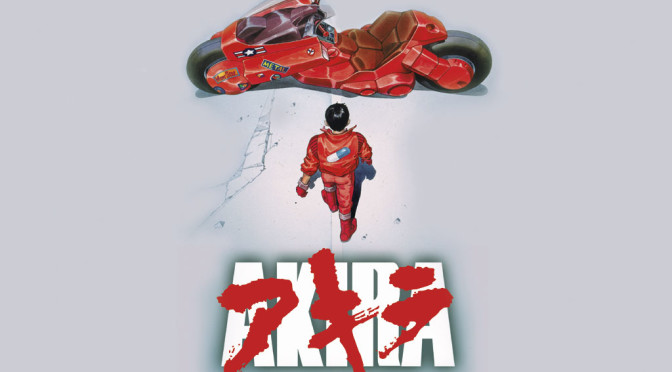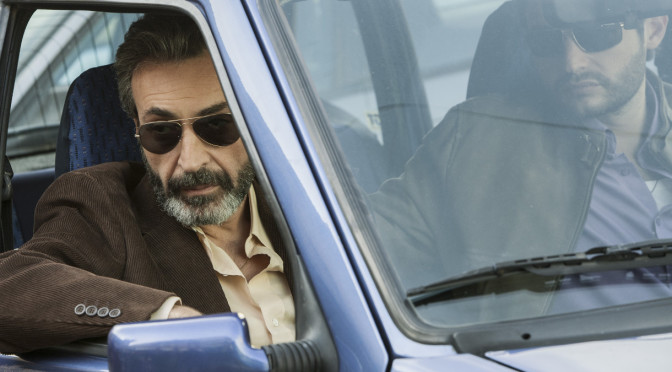Norvegia. Una piccola città su un fiordo è minacciata da una montagna che rischia di franare da un momento all’altro. Ciò causerebbe uno tsunami che distruggerebbe la ridente cittadina. Solo il geologo Kristian prende sul serio la minaccia. Proprio quando sta per cambiare vita e lavoro accade la catastrofe.
Archivi tag: torino33
Akira by Katsuhiro Ôtomo
Article by: Matteo Merlano
Translation by: Kim Turconi
Neo Tokyo, 2019. After the third World War, Japan is in crisis. Economy in ruin in addition to corrupted and ineffective politics cannot find a way to start up again a Nation where crime and violence rule the roost. The only thing which seems to be of a certain relevance to the government is the Akira Project, sort of super secret project intended to control an enormous power, which has caused sects of obsessed people to flourish all around the city, preaching the arrival of a divinity called Akira. In this chaos, gangs of bikers speed across the city on modified beasts. Among them there are Kaneda and Tetsuo. An unexpected accident during one of the many raids, will change their lives and those of the entire nation forever.
Undisputed masterpiece of Japanese animation, the movie of Katsuito Otomo is not just a cinematographic opera, but a whole experience, leaving the audience breathless. Produced in 1988 (in Italy came out only in 1992) it was the most expensive anime in History (with a budget of one billion yens) and brought to the creation of a specific production house to realize it, the Akira Committee, with Otomo himself as the chairman, who employed for years more than one thousand animators. All the fears and the contradictions of that decade are contained in this dystopia which draws fully from western cult movies. An elaborate, chaotic and colossal Neo Tokyo is the spitting image of the rainy Los Angeles from Blade Runner (the time of setting is, for this reason, not randomly chosen) ruled by lawless riders (Mad Max) who go all around the city on futuristic bikes (Kaneda’s motorcycle design is identical to the lightcycles from Tron). The aesthetic magnificence is something which leaves everyone amazed and the masterly sound work, overseen by composer Shoji Yamashiro, was an epochal evolution in the animation field.
The concept of Evolution itself is the base of Akira. What is this mysterious energy, so devastating that it needs to be hidden in the bowels of the earth? Who controls it? Where it comes from? Who owns it and how can it be used? The spiritual aspect of the film lies in this ambivalence of the concept of Evolution – especially technological evolution – which often leads to a regression when technology goes too far.
Is it creative or destructive? Otomo is certainly a son of Hiroshima and Nagasaki. That “sun” – which kills tens of thousands people in a few seconds – has affected his worldview. Evolution is a powerful force, but it can cause pain if mishandled. Akira embodies this philosophy and make it to burst with an explosion of visual effects and visionary experiences that leave an impression on one’s mind. The future portrayed by Otomo is crazy, chaotic and illuminated only by neon signs and skyscrapers lights. It is a future in which people run at full speed without any purpose, or they run for the wrong reasons.
The title of this review is taken from the famous Blade Runner monologue of Roy Batty/Rutger Hauer. Our choice has not been accidental, because the Future is already here – and perhaps already experienced. Otomo, just like Scott, “has seen things”. And we have seen them with him.
Lo scambio (Nameless Authority) by Salvo Cuccia
Article by: Lorenzo Trombi
Translation by: Martina Taricco
Torino, November 23, 2015 – Lo Scambio, directed by Salvo Cuccia, is one of the four Italian movies which run in the main section of the 33rd Torino Film Festival.
The story is inspired by real events. The director wrote it after several meetings with Magistrate Alfonso Sabella, where the two had the chance to touch the subject of a mafia homicide in which three young boys were killed: two of them were, without any doubt, not tied to organized crime.
The first estranging element is that characters in this story do not have a name: this choice contributes to amplify the ambiguity of the plot. The whole sequence of events starts in media res with a series of crossfades of people walking in a normal city market. The music is deafening. Here, all of a sudden, two strangers appear on the scene and kill two young boys.
In the next scene the action moves on to a police station, where something does not completely persuade the audience. Although the badge of people who work in such place is shown many times, there are some elements, scattered all along the movie, which give to the public the feeling of not really being in a law seat. In a narrative climax, played on the edge of uncertainty and of the untold, is instilled the doubt that who serves the law might, actually, be a ruthless mafia boss. The proof of this comes shortly after, in a scene where a presumed chief of police, one of the protagonists, is shown, years before, while being questioned himself.
On a scenographical level, there is an interesting contrast between very austere house interiors and the exteriors of an extremely degraded Palermo. The interiors where a hypothetical Janus Bifrons moves, that is to say the chief of police who actually is a mafia boss, are rational and tied. It is however behind this formalism and this aseptic cure that a strong anguish feeling is hidden. The pitch is reached when the boss’ wife hangs herself as she can not live secluded in her own house, hunted by her demons.
Every character has its double; their psychologies are all shifty and cryptic: anyone could be anyone else. This choice made by the director is intended to focus the audience attention on the core of the events rather than on the personalities of the characters or on relational dynamics.
Everything in the movie is made essential; the story is apparently narrated in an impersonal way. The credo that is in force in this film is not siding with anyone.
These atmospheres enhance the feeling of indefiniteness and uncertainty in which a significant thematic crux is unraveled: what if the mafia has got the wrong person?
The chief of police questions a helpless surveyor who had the bad luck of being in the wrong place at the wrong time. The man is eventually killed, an eye-opening event which shows us how the mafia can sometimes get off track when deciding who has to be killed. By this stage of the film, as confirmed by the title, it seems very likely that there was a mistake and the man was mixed up with somebody else.
The several changes of the focus really strike the eye and add to the feeling of anxiety and oppression experienced by the characters in the film.
The decision to film a gunfight without actually showing it but presenting it to the audience in a fixed camera shot and through the gunshot sound is spot on.
Similarly, in a beating scene we don’t see people fighting but it is possible to understand what is happening thanks to the noise we hear and the shadows on the walls.
Cuccia’s notable work is structured as a moral story where all events are connected in a cause-effect relationship. He depicts a dry and cold story where everything is based on retaliation.
“Lo scambio” (“Nameless Authority”) di Salvo Cuccia
Lo scambio, film diretto da Salvo Cuccia, è uno dei quattro film italiani presenti nella sezione Film in concorso del 33° Torino Film Festival.
Il soggetto prende spunto da una storia vera. Il regista lo ha scritto dopo diversi incontri con il magistrato Alfonso Sabella, durante i quali questi ha parlato di un omicidio di mafia in cui erano morti tre ragazzi, due dei quali sicuramente non avevano niente a che fare con la criminalità.
Continua la lettura di “Lo scambio” (“Nameless Authority”) di Salvo Cuccia



